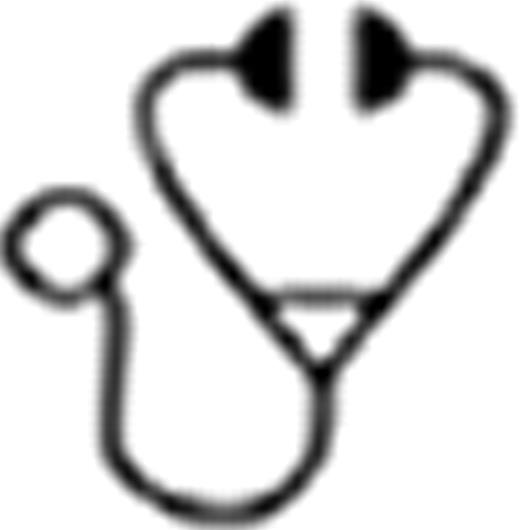Abstract
Abstract  2217
2217
Cardiac surgery (CS) is associated with high risk of antibodies (Abs) to platelet factor 4 (PF4) and heparin-induced thrombocytopenia (HIT). However, CS patients can also synthesize Abs specific to protein/H complexes other than PF4/H. In this regard, it has been outlined that some CS patients might also synthesize Abs to protamine/H complexes (PRT/H), but the ability of these Abs to induce adverse events is questionable. Recently a new assay (Zymutest HIA® IgG/A/M, Hyphen Biomed, France) has been developed for the diagnosis of HIT, but its principle is different from those of other ELISA since unfractionated heparin (UFH) is immobilized by protamine sulphate in wells and PF4 is provided by a platelet lysate (Plt L) added in the reaction mixture. Therefore, we used this assay to detect Abs to PRT/H complexes in CS patients, by testing plasma samples without addition of Plt L. We also looked whether Abs to PRT/H, or to PRT alone could be associated with platelet activation and clinical events or not.
232 consecutive CS patients without HIT (normal Plt count evolution while treated by enoxaparin (n=231) or UFH (n=1) post-operatively were sampled on day 7–8 after cardio-pulmonary bypass (CPB). Each plasma was studied with the Zymutest HIA IgG/A/M® and absorbance values (A450) were measured without and with addition of Plt L. Two groups of CS patients with heparin-dependent Abs were thus identified: one included patients with Abs that bind equally on PRT/H with or without Plt L (group named “Plt L-ind”), and therefore the A450 values obtained were similar. The second group (named “Plt L-dep”) comprised patients with Abs that bind to PRT/H only or mostly in the presence of Plt L. Therefore, the A450 recorded when the patient plasma was tested with Plt L was above the cut-off value (0.5) and at least two-fold higher than those measured without Plt L. Levels of Abs to either PF4/H (Asserachrom HPIA®, Stago, France), PRT alone (“in house” ELISA), or heparin alone (“in house” ELISA) were also assayed in these 2 groups of patients. Serotonin release assay (SRA) was also performed with UFH alone in all CS patients with heparin-dependent Abs and with PRT alone and PRT/UFH in 45 representative cases. In addition, results obtained in these CS patients were compared to those of 47 other patients with definite HIT diagnosed on clinical history and positive PF4-specific ELISA and SRA (including 21 cases after recent CS with CPB).
Heparin-dependent Abs were detected in 100 of 232 CS patients with the Zymutest HIA® assay, but A450 values were similar whether platelet lysate was added to the plasma tested or not in 59 cases (“Plt L-ind” group). No significant levels of Abs to PF4/H were detected in 30 of these 59 CS patients. 41 other CS patients were identified as “Plt L-dep” since A450 values were at least 2-fold higher when their plasma was tested with Plt L. Abs to PF4/H were detected in 40 of these 41 “Plt L-dep” samples without Abs to PRT or heparin alone. In contrast, Abs to PRT were present in 15 of the 59 “Plt L-ind” patients (including 9 with Abs to PF4/H) and 2 also had Abs to heparin alone. On the other hand, Abs to PRT were detected in only 3 of the 47 definite HIT who had also underwent recent CS, and 2 of them had “Plt L-ind” heparin-dependent Abs.
SRA was positive with UFH in only 4 of the 232 CS patients (including 2 with “Plt L-ind” Abs), who were asymptomatic despite high levels of Abs to PF4/H (A450> 2.5). SRA was also positive with PRT alone almost exclusively with “Plt L-ind” plasmas (7/30 vs. 1/15 with “Plt L-dep” plasmas). This platelet release was evidenced whether samples contained Abs to PRT alone (4/15) or not (3/15). It was always inhibited by IV.3 (neutralizing monoclonal Ab to FcgRIIa) and when heparin was co-incubated with PRT. In addition, SRA with PRT alone was positive with the 3 HIT plasmas with Abs to PRT.
Post-operative platelet count evolution was similar in CS patients until day 8, without clinical thrombosis, whether they had developed Abs to H/PF4, Abs to PRT alone, Abs to PRT/H, or not.
Abs that predominantly bind to protamine/heparin complexes are frequently present in CS patients post-operatively (25.4%), sometimes without Abs to PF4/H (12.9%). Despite these Abs to PRT/H can activate platelets in vitro in the presence of PRT (positive SRA), their capability to induce clinical adverse events is doubtful, unless patients are exposed again to protamine without heparin.
No relevant conflicts of interest to declare.
Author notes
Asterisk with author names denotes non-ASH members.

This icon denotes a clinically relevant abstract

This feature is available to Subscribers Only
Sign In or Create an Account Close Modal